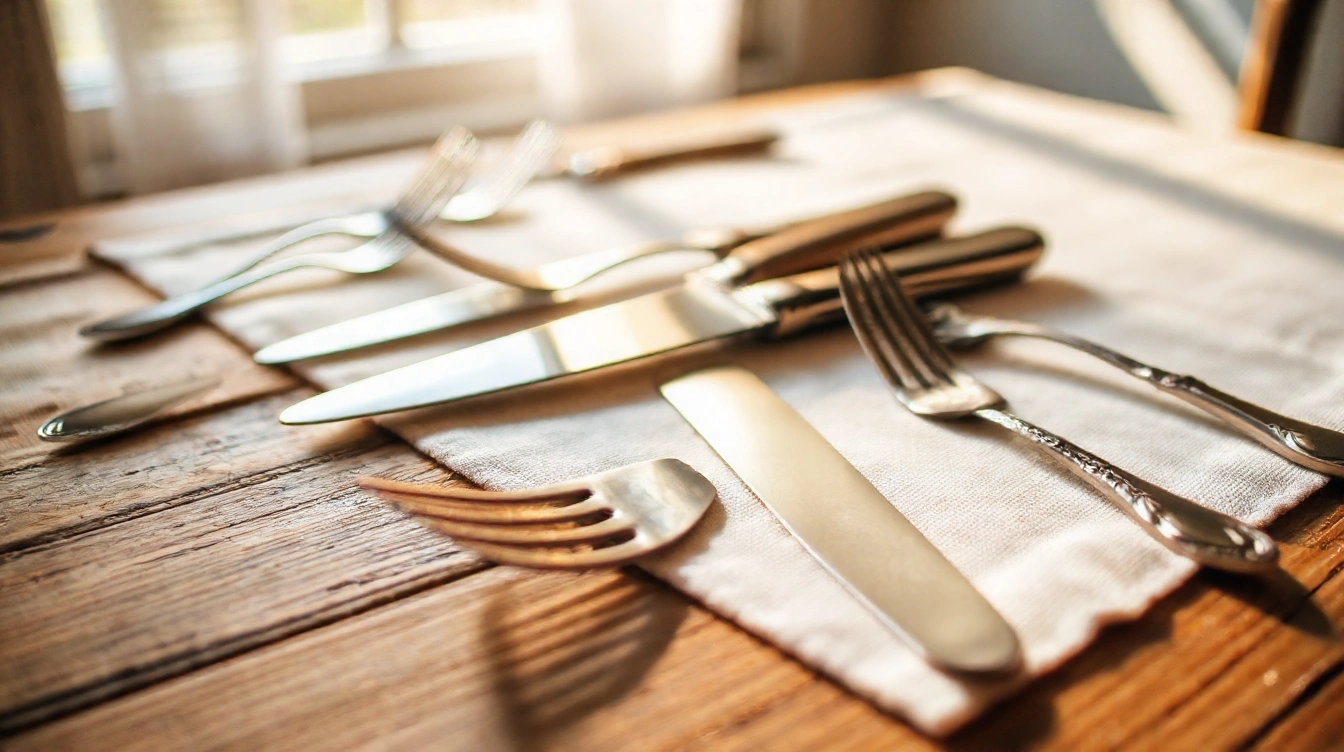Artisanal cutlery embodies a rich heritage where tradition meets meticulous skill. Each handcrafted piece reveals the artisan’s dedication to superior materials and precise techniques. This craftsmanship creates knives that balance function with artistry, reflecting cultural influences and individual mastery. Understanding these elements offers fresh insight into why handmade cutlery transcends mere utility, becoming timeless works cherished by collectors and enthusiasts alike.
The Legacy and Heritage of Artisanal Cutlery
Handmade cutlery tradition holds a rich history that dates back centuries, reflecting the skill and dedication of generations of artisans. The heritage knife making craft, rooted deeply in various regions around the world, embodies the continuity of techniques passed down through family lines and guilds. Each piece of artisanal cutlery carries with it the imprint of its creator’s meticulous work, representing not just functionality but also an artistic legacy.
Have you seen this : What are the essential steps to perfecting a homemade Cornish pasty?
The historical roots of artisanal cutlery reveal that knives and blades served crucial roles beyond their practical uses—the shapes, materials, and decoration often reflected local customs and beliefs. Regions renowned for their handmade cutlery tradition, such as parts of Europe, Japan, and the Middle East, developed distinctive styles that emphasized both aesthetic beauty and utility. These cultural influences have helped maintain diverse craftsmanship legacies over centuries, with master artisans often training apprentices within family workshops or specialized communities.
Preserving the lineage of master artisans is fundamental to sustaining the artisanal cutlery history. This ongoing chain ensures that traditional forging, shaping, and finishing techniques remain alive amid modern manufacturing pressures. These craftspeople not only uphold traditional methods but also adapt subtle innovations, continuously enriching the heritage of knife making. A profound appreciation for this legacy underlines the value of artisanal cutlery, distinguishing it from mass-produced alternatives by the character imbued through deep-seated expertise.
Topic to read : What are the key ingredients for a classic English trifle?
More information available here.
Hallmarks of Exceptional Craftsmanship in Handmade Cutlery
Handmade cutlery stands apart through exceptional craftsmanship characterized by meticulous attention to detail and refined finishing techniques. Unlike mass-produced knives, artisan cutlery features unique qualities reflecting the skill and dedication of the maker. Each handmade knife combines both functional and artistic value, ensuring that the piece performs exceptionally while also serving as a work of art.
One defining feature of superior knife making is the precise balance between blade sharpness, handle ergonomics, and aesthetic appeal. Exceptional craftsmanship ensures that the blade’s geometry is optimized for cutting performance, while the handle is crafted for comfort and durability. This balance enhances usability, making handmade knives ideal for professional chefs and enthusiasts alike.
Furthermore, artisan cutlery features exceptional finishing techniques such as hand polishing, engraving, or filework. These details not only improve the knife’s appearance but also protect it from corrosion and wear, prolonging its lifespan. The use of high-quality materials like carbon steel or damascus steel further elevates the knife’s effectiveness and durability.
In summary, handmade knife qualities go beyond mere functionality; they encapsulate a dedication to traditional methods, precision, and artistry. This results in cutlery that is not only efficient but also a testament to superior craftsmanship, embodying both heritage and innovation. More information available here.
Materials and Techniques in the Art of Artisanal Knife Making
In the realm of artisanal knife materials, selecting the right steel and handle is crucial to achieving both function and beauty. High-carbon steel dominates among craftsmen for its superior edge retention and ease of sharpening. Its ability to develop a sharp, durable blade makes it a preferred choice for artisanal blades designed for longevity. Damascus steel, with its signature layered pattern, not only offers strength but also introduces an aesthetic element that collectors and users admire.
Handle selections extend beyond traditional woods, embracing alternative materials such as stabilized wood, micarta, and resin composites. These choices enhance durability, moisture resistance, and ergonomics while allowing artisans to craft unique tactile experiences. Each handle material contributes to the knife’s overall balance, comfort, and visual appeal, reflecting the maker’s style and intended use.
When considering forging techniques, a fascinating interplay exists between traditional and modern methods. Traditional forging involves heating, hammering, and folding the steel by hand, a labor-intensive process that gradually builds strength and character into the blade. Modern innovations, such as controlled heat treatments and precise CNC machining, supplement these age-old techniques by enhancing consistency and efficiency without compromising the artisanal spirit. This fusion ensures that each knife possesses a distinct personality, shaped by the craftsmanship behind it.
Unique processes, including hand-polishing, differential hardening, and intricate handle fittings, further define each piece. Differential hardening, for instance, produces a harder edge with a tougher spine, optimizing performance while showcasing fine temper lines. These nuanced steps highlight the dedication to perfection that artisanal knife materials and forging techniques demand. Such techniques underscore the commitment to excellence that sets these blades apart.
More information available here.
Celebrated Master Artisans and Signature Styles
Discovering the world of master knife makers reveals a vibrant tapestry of tradition, innovation, and personal expression. Artisan profiles often highlight creators who have dedicated decades to perfecting their craft, blending time-honored methods with unique visions. These bespoke cutlery artists shape the field by developing signature cutlery styles that stand apart in both form and function.
The influence of regional culture is unmistakable in many artisan profiles. For example, Japanese master knife makers typically emphasize razor-sharp edges and minimalist aesthetics, integrating centuries-old techniques that prioritize precision. Conversely, European artisans might incorporate ornate handles and robust blade shapes, reflecting practical and decorative priorities inherent to their locales. Such regional influences enrich the diversity of signature cutlery styles, enabling collectors and chefs to select pieces that resonate with their culinary philosophies.
Individual artistry substantially impacts both the design and value of handcrafted blades. When a master knife maker’s name is attached to a piece, it elevates its desirability and often its price, recognizing the skill and passion invested in each creation. This intertwining of function, beauty, and provenance explains why bespoke cutlery artists remain at the forefront of the cutlery world, continuously inspiring enthusiasts and professionals alike.
More information available here.
Showcasing Exceptional Handmade Cutlery Pieces
Explore an artisan cutlery showcase that highlights the finest examples of unique handmade knives. These pieces exemplify standout craftsmanship, each reflecting the meticulous skill that only seasoned artisans can achieve. The gallery features an array of knives, each distinguished by intricate details, balanced design, and the signature touches that mark true quality.
Special features such as hand-forged blades, natural handle materials, and personalized engravings set these handmade knives apart from mass-produced alternatives. Such marks of excellence not only enhance their aesthetic appeal but also improve functionality and durability, illustrating the deep commitment to craft.
Photographic examples reveal the rich textures and finishes that characterize these exceptional knives, from the delicate hammer marks on blades to the seamless joints merging handle to blade. Behind-the-scenes visuals provide insight into the creation process—showing artisans at work, shaping steel, and refining every contour. This transparency helps appreciate the time and expertise invested in every piece.
More information available here.
Appreciating and Collecting Artisanal Cutlery
Artisanal cutlery holds a unique appeal, combining craftsmanship, history, and functionality in one object. Collectors of handmade cutlery often find value not only in the aesthetic beauty of each piece but also in the skill and tradition it represents. The value of such cutlery stems from meticulous handcrafting techniques and the use of high-quality materials, which together create tools that are both durable and elegant.
Identifying authentic handmade cutlery requires a keen eye for detail. Look for signs of hand-forging, subtle variations that differentiate each piece, and high-grade steel often used by artisans. Authentic pieces will usually exhibit intricate patterns or finishes achieved through manual processes, setting them apart from machine-made counterparts. When investing in craftsmanship, it’s essential to verify the maker’s mark or signature, which can often be found on the blade or handle, affirming its origin and quality.
Proper care and display significantly impact the longevity and presentation of your artisanal cutlery. Regular cleaning, avoiding abrasive materials, and careful drying prevent corrosion and preserve sharpness. Displaying these pieces in well-lit, secure cases or wooden racks not only showcases their artistry but also protects them from damage. Investing in craftsmanship means committing to ongoing maintenance, ensuring your collection remains an enduring source of pride and functionality. More information available here.








